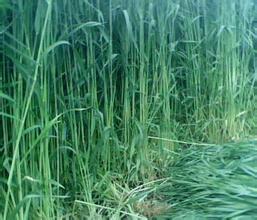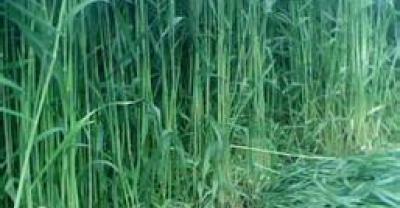Pasture sheep planting Pasture precautions
1. Suitable varieties
Alfalfa, winter grazing 70 rye, rosingrass, clover, polymer grass, rumex and other forage varieties with high yield, high quality and strong adaptability can be selected.
II. Moderate scale
The cultivation scale should be determined according to the family labor situation and equipment conditions, and then the planting area should be determined according to the cultivation scale. Under normal circumstances, 1 mu of forage grass can feed 15 ~20 adult sheep all year round. Sheep breeding speed is slow, the annual growth rate is only about 3 times the number of ewes at the beginning of the year, so the planting area of pasture depends on the breeding sheep base and development speed, so as to meet both supply and waste.
III. Proper crop rotation
The principle of determining the arrangement of grass crop is to increase the yield of grass per unit area and ensure that sheep can eat fresh grass all year round. The following modes are often used in production:
(1) Alfalfa and Winterherd 70 rye were planted reasonably, which could ensure the balanced supply of forage for sheep all the year round.
(2) Rumex k1 hybrid rumex field interplanted with multi-flowered ryegrass or winter grazing 70 rye.
IV. Proper feeding
Adult sheep need about 4 kg of green feed every day, and too much green grass is easy to cause diarrhea. In the case of sufficient green feed, the proportion of bran in concentrate should be appropriately increased (bran should account for about 40% of the total concentrate). Rumex k1 hybrid rumex has higher water content, so it should be properly controlled when feeding. Alfalfa and clover are easy to cause bloating disease when fed alone, so they should be fed together with other forages. Sudan grass, Mexico corn seedlings containing hydrocyanic acid, should be slightly dried after harvest and then fed.

Q Group: 58656984
- Prev

Periodontal implants give you a third set of teeth
Human life only deciduous teeth, permanent teeth two pairs of natural teeth. Permanent teeth will grow out of deciduous teeth, permanent teeth lost one less, can not be regenerated. But since...
- Next

There is a huge room for development when this kind of medicinal material is planted in rural areas.
Bletilla striata belongs to the genus Bletilla of Orchidaceae, which has the functions of tonifying lung and stopping bleeding, detumescence and muscle formation.
Related
- Fuxing push coffee new agricultural production and marketing class: lack of small-scale processing plants
- Jujube rice field leisure farm deep ploughing Yilan for five years to create a space for organic food and play
- Nongyu Farm-A trial of organic papaya for brave women with advanced technology
- Four points for attention in the prevention and control of diseases and insect pests of edible fungi
- How to add nutrient solution to Edible Fungi
- Is there any good way to control edible fungus mites?
- Open Inoculation Technology of Edible Fungi
- Is there any clever way to use fertilizer for edible fungus in winter?
- What agents are used to kill the pathogens of edible fungi in the mushroom shed?
- Rapid drying of Edible Fungi

